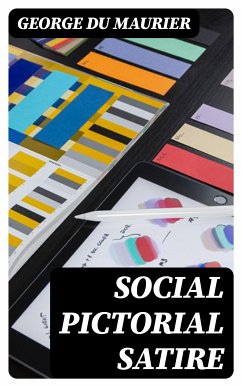In "Social Pictorial Satire," George Du Maurier masterfully encapsulates the rigors of Victorian society through a lens of sharp wit and satirical observation. This collection presents a series of illustrations and accompanying essays that critique the social mores and class distinctions of Du Maurier's time. His detailed, almost caricature-like artistic style, combined with keen social commentary, reveals the hypocrisies of social conventions, beckoning readers to contemplate humanity's follies and transient nature. Each piece serves as both an artistic visual and a poignant editorial, allowing for an engaging discourse between illustration and text that is distinctly reflective of the burgeoning modernist movements of the late 19th century. George Du Maurier, an accomplished illustrator and writer, drew from his own experiences as a prominent figure in the art world, including his interactions with luminaries of literature and society. His background as a caricaturist for "Punch" honed his ability to blend humor with critique, making him uniquely equipped to explore the nuances of social dynamics in England. This background, coupled with the theatrical and literary circles in which he moved, informed his insightful perspectives featured throughout the book. I wholeheartedly recommend "Social Pictorial Satire" to those who appreciate the intricate interplay between art and literature, as well as to anyone interested in understanding the cultural tensions of Victorian England. Du Maurier's work provides a lens through which the past can illuminate current societal issues, making it a pertinent read for scholars and casual readers alike.
Dieser Download kann aus rechtlichen Gründen nur mit Rechnungsadresse in A, B, BG, CY, CZ, D, DK, EW, E, FIN, F, GR, H, IRL, I, LT, L, LR, M, NL, PL, P, R, S, SLO, SK ausgeliefert werden.









